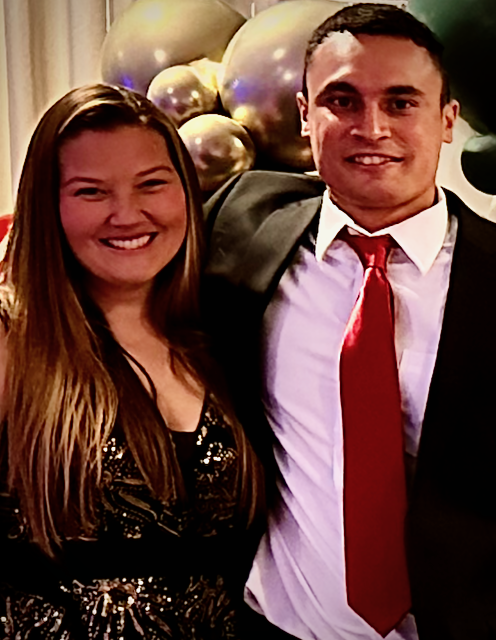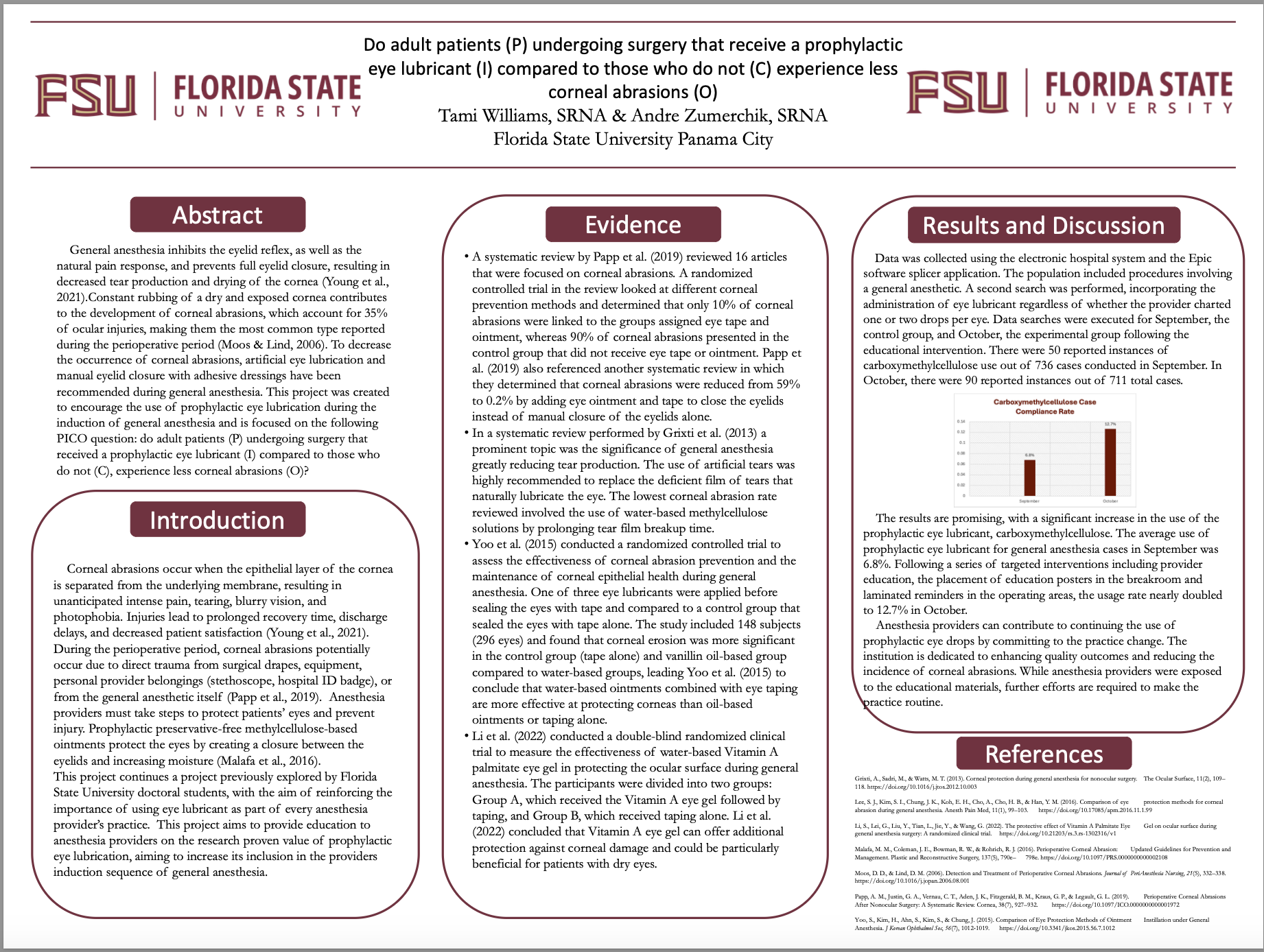Research Symposium Program - Individual Details
5th annual Undergraduate Research Symposium, April 17, 2025
Andre Zumerchik https://pc.fsu.edu/student-research/symposium/symposium-program-2025/dnap

BIO
Names: Tami Williams & Andre Zumerchik
Major: Nurse Anesthesia Practice-DNAP
Academic Background: Tami obtained her BSN from the University of North Florida and practiced as a nurse for 11 years, working across the country, prior to joining the Florida State Family at Panama City. Andre completed his undergraduate degree at Quinnipiac University in 2019. Practiced as a nurse for 3 years in Hartford, Connecticut and Chicago Illinois before coming to Florida State University here at Panama City.
Do adult patients (P) undergoing surgery that receive a prophylactic eye lubricant (I) compared to those who do not (C) experience less corneal abrasions (O)
Authors: Andre Zumerchik, Stacey VanDykeStudent Major: Nurse Anesthesia Practice-DNAP
Mentor: Stacey VanDyke
Mentor's Department: Nurse Anesthesia Mentor's College: Florida State University Co-Presenters:
Abstract
Abstract
When a patient undergoes a surgical procedure requiring general anesthesia, they lose the ability to close the eyelids and protect their corneas. The corneal reflex for tear secretion is diminished during general anesthesia (Grixti et al., 2013). Constant rubbing of a dry and exposed cornea contributes to the development of corneal abrasions, which account for 35% of all ocular injuries, making them the most common type reported during the perioperative period (Moos & Lind, 2006). These abrasions are remarkably painful. Aside from the significant pain and inconvenience for the patient, there is an increase in health care cost, length of stay and resource use.
The following PICO question was used to conduct a literature search: Do adult patients (P) undergoing surgery that receive a prophylactic eye lubricant (I) compared to those who do not (C) experience less corneal abrasions (O)? The literature search yielded two systematic reviews and two randomized control trials. The evidence from these studies demonstrated that measures such as manual eye closure and prophylactic eye lubrication can prevent corneal abrasions. This project aimed to increase the use of carboxymethylcellulose, a water-based lubricant, in an anesthesia practice in Northeast Florida. A series of targeted interventions were implemented to encourage lubricant usage, including provider education, educational posters, and laminated reminders in the operating and procedure areas. After data collection, eye lubrication nearly doubled to 12.7% from 6.8% the previous month. There was an increased adoption of carboxymethylcellulose eye lubricant as a preventive measure against corneal abrasions.

Keywords: Corneal Abrasion, Carboxymethylcellulose, eye lubrication

